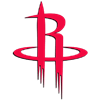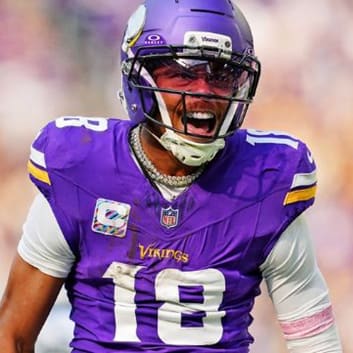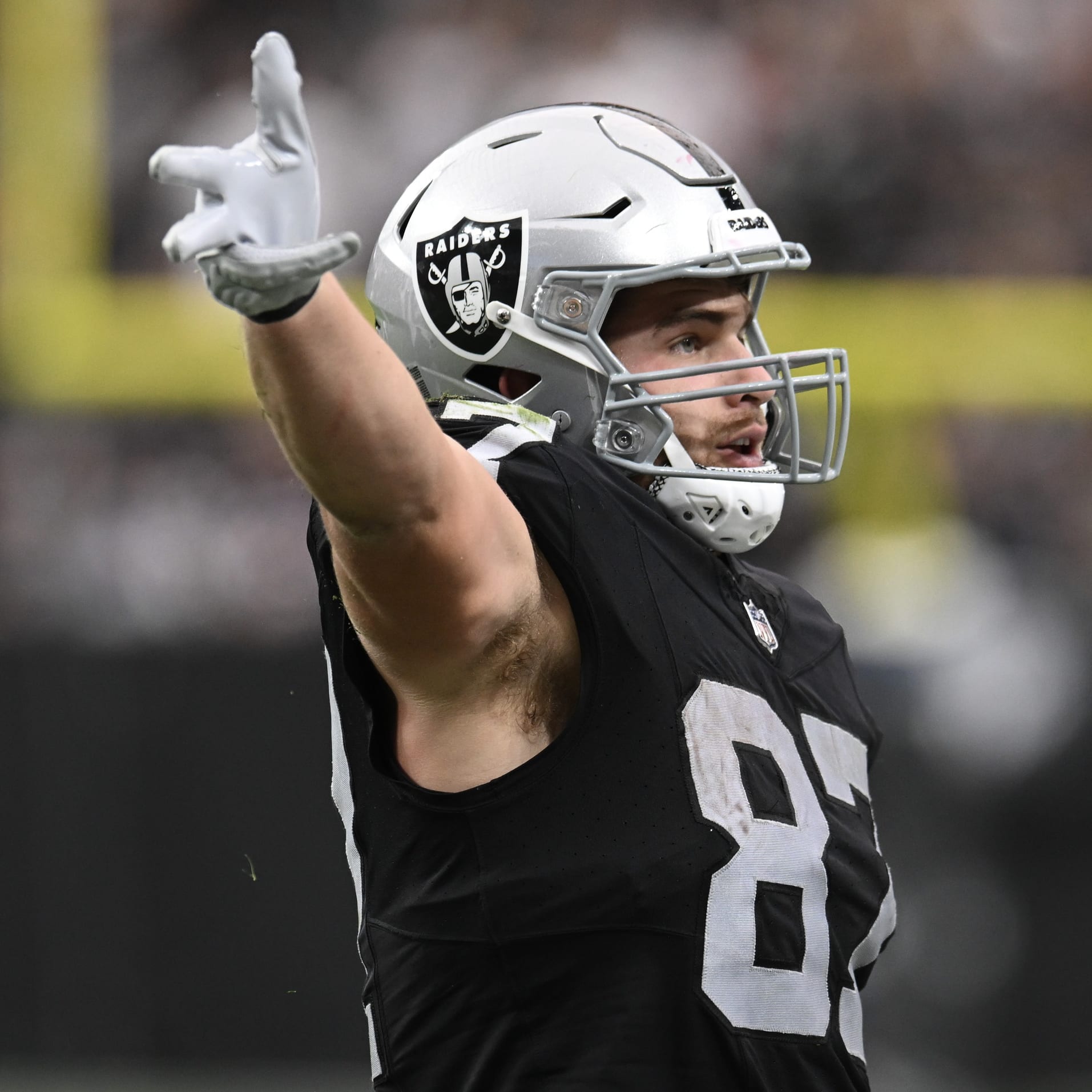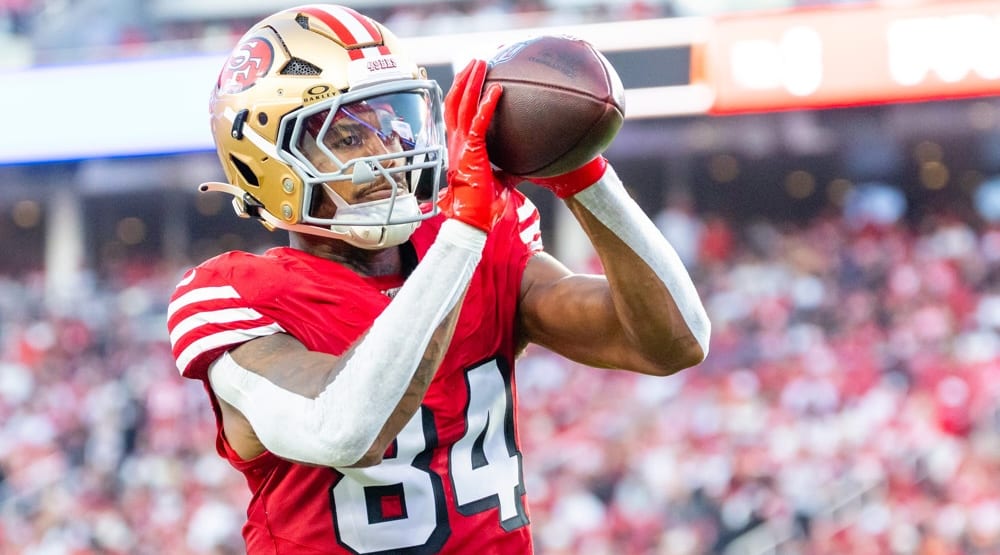Rookie receivers have offered more profit in recent years and drafters in Underdog Best Ball leagues are understandably trying to stay ahead of that curve by diving deep into the extremely talented 2021 rookie wide receiver class. This three-part series will look at this rookie receiver class and try to determine which ones are worth their current prices and which ones are overrated by the market.
This article is the third part of the series, looking at D'Wayne Eskridge, Nico Collins and Kadarius Toney. The second article breaks down Terrace Marshall, Amon-Ra St. Brown, Dyami Brown and Josh Palmer, and you can read it here. You can read the first part here – it addresses Ja'Marr Chase, DeVonta Smith, Jaylen Waddle and Rondale Moore.
D'Wayne Eskridge, SEA (204.9 Underdog ADP)
Eskridge had a strange career at Western Michigan, bouncing between cornerback and wide receiver and staying on the team until he was nearly 24 years old, so it's difficult to think of a case study similar to him. There might not be any. He will be an interesting case study himself though, especially on the question of whether and how much production and athletic testing can offset a negative age adjustment to a prospect's profile. Most fourth-year players play around age 21, whereas Eskridge was 20.5 before he even earned a starting role at receiver. Eskridge's age-adjustment penalty is a big one.
DeVonta Smith turned 22 last season but no one was concerned about the age adjustment to his production because his production was so unbelievably strong that it could withstand any adjustment penalty. Eskridge is a similar version of that scenario, though worse in both directions – while great, Eskridge's production was not as insane as Smith's, and Eskridge's big production didn't occur until he was 23.5 in 2020. Eskridge had basically five big games last year, all of them against MAC competition, a sample in which he caught 30 receptions for 715 yards and seven touchdowns.
I personally think Eskridge's production grade trends closer to negative than positive, because he was a below-baseline contributor as the team's leading receiver in 2017, and in 2018 he was pushed aside by true freshman Jayden Reed. Reed's probably good, but if he isn't the next Corey Davis then it's a bad look for Eskridge, who was 21.5 at the time. When a player has a concerning production grade I need to see standout athletic testing from them.
The poor age-adjusted production implies a lack of skill set in the meantime, but with standout athletic tools a player is able to improve more easily than the player who lacks such tools. This might be Eskridge's way through – he was renown for his sprint speed even early in his Western Michigan career, and it's certainly the first thing you notice about him when you turn on the tape. Still, Eskridge could have tested better than he did -- at 5-foot-9, 190 pounds he logged a 4.40-second pro day 40, which is both good and short of expectations in his case. It basically means he's 0.1 seconds slower in the 40 than Mecole Hardman, to put the scale of speed into perspective.
All in all, Eskridge struck me as a questionable pick in the second round. Not nearly as bad as Tutu Atwell, and not as bad as Josh Palmer in the third, but the Seahawks might regret taking Eskridge over Terrace Marshall, Dyami Brown, Nico Collins and maybe several others. I mention that to hopefully add more effect to the fact that even as a relative Eskridge critic, I don't understand at all why he falls this far in Underdog drafts.
Perhaps Eskridge has only fallen over concern about his toe injury from the summer, but he's been practicing for the past week and was never expected to miss regular season time. Eskridge's only competition is Freddie Swain – an interesting enough prospect in his own right, but one who's likely well short of Eskridge's talent level. Again – this is an Eskridge skeptic telling you – Eskridge easily outranks Swain as a prospect. Swain's ideal role would sooner be a WR6 than WR3. Eskridge should be considered the heavy favorite for Seattle's WR3 function. He's a no-brainer pick this late.
Verdict: Bulk buy
Nico Collins, HOU (208.3 Underdog ADP)
Strong as the 2021 rookie wideout class is, it noticeably lacks much in the way of height or mass. If nothing else, Collins stands out for his combination of size (6-foot-4, 215 pounds) and athleticism (4.45-second pro day 40, 37.5-inch vertical, 125-inch broad jump, 6.79-second three-cone drill). Collins can really move – his 40, jumps and three-cone are all well above average for receivers in general, let alone receivers anywhere near his height (94th percentile, according to Mockdraftable.com), weight (80th percentile) or arm length (95th percentile). His athletic dimensions are very similar to someone like Kenny Golladay.
Like Golladay, Collins should be particularly effective downfield and near the sideline in the NFL. He's built to play outside and compel the safeties backward. This was Collins' role in the Michigan offense, where he produced well above the baseline and reliably returned big plays with his targets. The knock on Collins is that he didn't do more than that; he didn't draw many targets overall because his usage was only to the outside and downfield. To draw more targets he needed to show up more underneath and intermediate, and he didn't. That could be a sign of a meaningful limitation with Collins, and if so it might render him a role player and decoy in the NFL rather than a viable option for target volume.
There's a chance that Collins' target volume at Michigan was out of his control, however. The offense was dubiously designed in general, and the quarterback personnel specifically struggled to throw the ball to the part of the field where Collins ran all of his routes. Whatever limitations of Collins' production, it still graded better than that of teammate Donovan Peoples-Jones. Peoples-Jones has already exceeded NFL expectations as a prospect, and if the 2020 draft were redone he'd sooner go in the 3rd or 4th than the 6th. If we thought Peoples-Jones was worse than he was because the Michigan offense dragged him down, then we should be prepared for the same possibility with Collins.
While Collins' production wasn't varied at Michigan it was still a meaningful contribution in a role that required him to run the most difficult routes in the offense. In this unenviable role he didn't just outplay the Michigan baseline, he blasted past it. Michigan completed 59.9 percent of their passes at 8.0 yards per attempt, but in that same sample Collins caught 75 of 122 targets for 1,361 yards and 13 touchdowns. Collins' catch rate of 61.5 was safely above baseline, and his 11.2 yards per target is downright memorable given that. That's 23.2 percent of Michigan's passing yardage and 28.2 percent of their passing touchdowns on a target share of 16.6 percent. Even if Collins' modest target share indicates some limitation in his game, Michigan still should have found the way to force the ball to him until those returns diminished. Bad coaching was a part of this particular outcome – just ask Peoples-Jones.
So Collins is probably good. The real question is how soon can we expect him to make it evident on the NFL field. It's not easy to pin down a fair rookie-year expectation, especially with upside as tantalizing as this. The good news is that Collins was earning plenty of first-team reps in Houston's training camp, presumably rotating with veteran Chris Conley opposite locked-in WR1 Brandin Cooks. It's also true that, at 6-foot-4, Collins is entirely unique among Texans wideouts for his build. If a task requires someone 6-foot-3 or higher he is the only candidate for that task.
A prospect like Collins will almost always overtake a player like Conley eventually, and the Texans are committed to that eventual outcome. In the meantime, though, it must be noted that Conley isn't exactly a bum. Conley is extremely athletic – he can match Collins' utility as a sideline decoy – and in the past two years Conley acquitted himself fairly well as the WR2 opposite DJ Chark in Jacksonville. If Cooks is sufficient as their WR1 (he is) and someone of Keke Coutee/Anthony Miller is sufficient in the slot (they might be), then Conley can probably prove sufficient at the remaining third wide receiver spot. It's still a battle Collins will eventually win, perhaps even now, and if nothing else an injury to Cooks would catapult Collins into prominent usage.
Verdict: Bulk buy
Kadarius Toney, NYG (212.8 Underdog ADP)
Toney was perhaps a bad pick by the Giants in the first round. At best he's a smaller, slower, less productive version of Parris Campbell, who was a late second-round pick in 2019. Taking Toney in the first in a draft loaded with wideout talent is unlikely to age well.
Still, 212.8 is awfully late in the ADP. The pickings are scarcer yet than 'slim,' so any risk with Toney at this price is minimal and any alternative options are uninspiring. It's one thing to not believe in Toney as a first-round pick, but when the nearest wideouts in the ADP are Juwan Johnson (213.5), Adam Humphries (213.6) and Collin Johnson (214.4) it's difficult to think of a meaningful criticism. What's the difference between nothing and nothing?
With that said, we should assume a somewhat poor rookie season awaits Toney. He was nearly 22 before he could earn regular playing time at Florida, and the players who ran ahead of him (Van Jefferson, Freddie Swain) were middling at best. The upside Toney holds as a prospect has to do with developmental upside afforded by his uncommon athleticism. That upside scenario, if it exists, is likely a year or more away – much like how he needed four years before producing at Florida. In the meantime, Darius Slayton is just as fast and a much more polished downfield runner on the boundary, and opposite him Kenny Golladay is locked into an every-down role. Sterling Shepard is a strong player in the slot. Toney can't displace any of those three on the basis of merit.
And yet, bleak as it's been for Toney and likely as his 'nothing' scenario might be, he definitely has a better chance for upside than most of the players going in his range. We're talking WR5-type upside here. It's a low bar, and a speedy first-round pick likely has a better shot of clearing it than an undrafted tight end (Johnson), a journeyman slot specialist (Humphries) or WR4 in Jacksonville (Johnson).
Verdict: Fair price







































